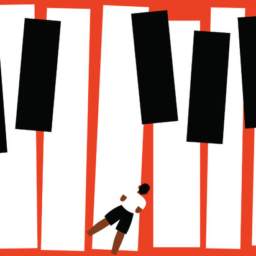
A few years ago I came across an online column about the Benefits of Early Childhood Music Programs. It highlighted a few ways that engaging children in music early on enhances their sense of balance and coordination, strengthens their motor skills, and helps them to recognize pitch and volume.
In the article, Rick Podger briefly mentions five developmental domains that occur between birth and age 8, which are often referred to as the “SPICE of Life”: Social, Physical, Intellectual, Creative, and Emotional.
Being exposed to and engaging in the arts can have profound effects on the way that a child develops in all five of these areas, not just the creative. Here is a little insight into why your youngster would benefit from music, movement, and visual art classes.
Social
In this realm children learn to play with others and form attachments. They also begin to cooperate and share with each other. Art classes can help reinforce these aspects of social development because there is a give and take that goes on. This encourages youngsters to work together and develop friendships. Childhood art classes are rarely focused on individual children. The importance is on the social aspect of the art-making experience, and reinforcing the group dynamic.
physical
This sphere is related to the development of fine (small) and gross (big) motor skills. A few examples of fine motor skills in the arts are: plucking guitar strings in rhythm, painting details onto a picture, controlling your wrist while dancing with a paper fan (as seen in a few forms of Japanese dance), and controlling your vocal chords. Examples of gross motor skills would be large dance moves that incorporate your whole body (often found in many forms of African dance), wailing on the drums, or painting large strokes on a canvas. All of these abilities take time to develop, but as a child practices she begins to coordinate both the smallest and largest of movements.
intellectual
Here, children begin to make sense of the world around them. Music is a great way to help kids learn to order their day. Songs that are sung while cleaning up, bathing, getting ready for bed, and brushing teeth are a perfect place to start. They begin to associate these songs with the action, and it makes the action more fun to do! And on another level, engaging in art helps kids discover sounds, shapes, and colors in their environment. Chidlren can begin to connect the art-making experience with nature, associating a police siren to vocal pitches, evergreen trees to triangles, and yellow to the sun or the color of their kitty’s eyes.
creative
This is where children develop and discover that they have special abilities, which turn into talents as they grow. Early childhood art classes allow youngsters to explore this new world of creativity. Kids are encouraged to use their imaginations, move their bodies, play in time with music, and explore colors and shapes. As children grow they learn to develop these abilities further to become great storytellers, actors, musicians, painters, sculptures, and dancers. Your child doesn’t have to grow up to be an artist. The skills that are developed in an arts education are transferrable. Children learn to problem solve and think creatively about their world. These are necessary skills to be successful in almost any field.
emotional
In this realm children become self-aware and build confidence, while learning to cope with and understand their feelings. The arts are incredible self-esteem boosters. Children who are encouraged to be creative from an early age often become confident, well-adjusted adults because they were given the chance to explore their feelings, open their eyes to new ways of looking at their world, and understand that they are people who matter in this world – that their thoughts and emotions are valid.
What could be better for a child then exposing her to the arts, and allowing her the space to explore? I can think of nothing…
If you want to find music classes in your area, try looking here.











